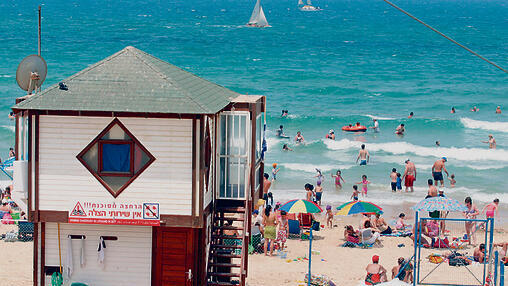As Israel's summer heat drives crowds to the coast, a new Health Ministry report published Thursday identified beaches with dangerous bacterial contamination levels linked to intestinal illnesses, ear infections and eye inflammation throughout 2024.
The study of officially designated bathing sites revealed a significant margin of water samples nationwide from 155 official beaches exceeded safety standards for fecal indicator bacteria.
Regional analysis shows alarming disparities: Haifa recorded Israel's highest regional contamination rate at 9.2% of samples, while Herzliya's Acade South Beach was the country's single most polluted site, with 20% of samples failing safety tests. Significant contamination was also detected in Hadera.
In Tel Aviv, exceedances ranged from 3% at Gordon, Geula and Tel Baruch beaches to 7% at Tel Baruch North and Hof Ha'Tzuk South. Conversely, the Rehovot area (primarily Rishon LeZion) showed Israel's cleanest results at just 0.6%, with Palmachim and Blue Beach recording zero contaminated samples.
Contamination frequently spikes after winter rainfall washes pollutants seaward. In 2024 alone, authorities issued 48 pollution warnings and closed beaches for 648 cumulative days.
Get the Ynetnews app on your smartphone: Google Play: https://bit.ly/4eJ37pE | Apple App Store: https://bit.ly/3ZL7iNv
Though warnings decreased from 2023, Amir Itzhaki, Head of the National Environmental Health Division, cautioned that this may reflect reduced monitoring or security-related closures in northern Israel rather than improved conditions.
"Israel's density creates multiple pollution sources," Itzhaki noted. "Some are preventable—like sewage failures—while others, like rain runoff mixing with contaminants, are not."
As families flock to shores during the school summer break, the report underscores an urgent need to balance tourism with environmental health. Swimmers are advised to verify water quality through real-time Health Ministry alerts and crowd-sourced jellyfish trackers before entering the water.



